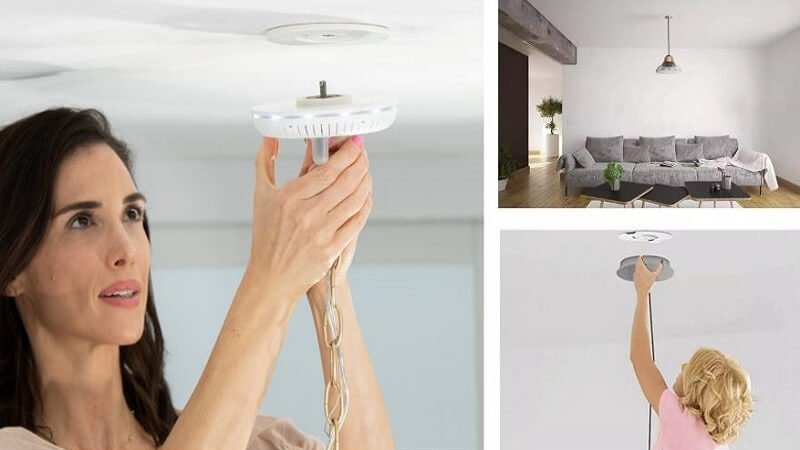One of the fantastic attributes of smart lighting is how easily it fits with the setup you already have at home. Many people think it’s too hard to upgrade their lights to smart ones, so they don’t try them at all, missing out on all the great features these lights offer.
Adding integrated lighting control can help you save money on power bills and make your home more comfortable. When you use home lighting automation systems correctly, your lights can work together smoothly. Knowing the simple steps to follow when setting everything up is good practice.
However, making the integration smooth requires careful planning and thoughtful execution. This article will help you in the integration process effectively. Let’s discuss the best practices that will ensure your success.
Assessing Your Current System
Before installing smart lighting, take time to understand your current home automation setup. Assess the compatibility of your system with the new smart lighting devices. Common platforms like Z-Wave, Zigbee, and Wi-Fi-based systems often support integration, but it’s crucial to verify compatibility.
Choose the Right Smart Lighting Products
The smart lighting market offers a variety of options, including smart bulbs, switches, and dimmers. When selecting products, prioritize those compatible with your automation platform. Pay attention to features like:
- Dimming capabilities: For adjustable ambiance.
- Color-changing options: Perfect for customizing your space.
- Energy efficiency: Look for LED-based options to save power.
Brands like Philips Hue, Lutron, and Nanoleaf often offer excellent compatibility with home lighting automation systems, making them ideal choices for most households.
Use a Centralized Hub
A centralized hub manages multiple smart devices at a time. Hubs like Samsung SmartThings, Amazon Echo, or Google Nest are like the brains of your home automation setup. They enable different devices to communicate easily and reduce the need for multiple apps. Additionally, hubs simplify creating automation rules, such as dimming lights at night or turning them off when no one is home.
Plan Your Lighting Zones
Divide your home into lighting zones based on functionality and usage. Examples include:
- Living areas: Focus on warm and inviting tones.
- Workspaces: use brighter, cool-toned lights for better focus.
- Outdoor areas: Use motion-sensor lighting for security.
Zoning allows for better energy management and helps to customize the lighting experience to different spaces. Ensure your automation system supports zoning for maximum flexibility.
Optimize Connectivity and Placement
Smart lighting relies heavily on stable connectivity. Here are some tips to avoid disruptions:
- Wi-Fi devices: Place your router centrally and ensure a strong signal throughout your home.
- Z-Wave and Zigbee devices: Use repeaters to extend the network range.
- Avoid interference: Keep devices away from other electronics that may disrupt signals.
Carefully positioning your smart lights and related devices ensures uninterrupted performance.
Use Automation Features
One of the biggest advantages of smart lighting is automation. Set up rules to make your lighting system smarter and more efficient:
- Schedules: Program lights to turn on/off at specific times.
- Motion sensors: Automatically illuminate spaces when movement is detected.
- Geofencing: Sync lights with your smartphone’s location to activate them when you arrive home.
These rules not only enhance convenience but also save energy over time.
Focus on Security and Privacy
When integrating smart lighting into your home lighting automation system, don’t overlook security. Here’s how to safeguard your system:
- Use strong passwords: Protect your automation platform from unauthorized access.
- Update firmware regularly: Ensure all devices are running the latest software.
- Secure your network: Use encryption and a strong password for your Wi-Fi.
Taking these steps will help keep your system secure while enjoying the benefits of smart lighting.
Test and Troubleshoot
After setting up your smart lighting system, test it thoroughly. Check for the following:
- Responsiveness: Ensure lights respond promptly to commands.
- Compatibility: Verify that all devices work easily together.
- Automation rules: Confirm that schedules and triggers function as intended.
If issues arise, consult the manufacturer’s support resources or your automation system’s documentation. Troubleshooting early helps avoid future frustrations.
Scale Up Gradually
Instead of integrating all your lights at once, start small. Begin with one or two rooms to understand how smart lighting works within your setup. Gradually expand as you become more familiar with the system.
Scaling up incrementally reduces the risk of compatibility issues and ensures a smoother transition.
Conclusion
Integrating smart lighting into your home automation system is very simple. By understanding your existing setup, choosing compatible products, and following these best practices, you can create a smart lighting system that enhances convenience, efficiency, and ambiance.
Whether you’re setting up lighting control or upgrading lighting automation systems, proper planning will shine your home brighter, smarter, and more beautifully than ever.
